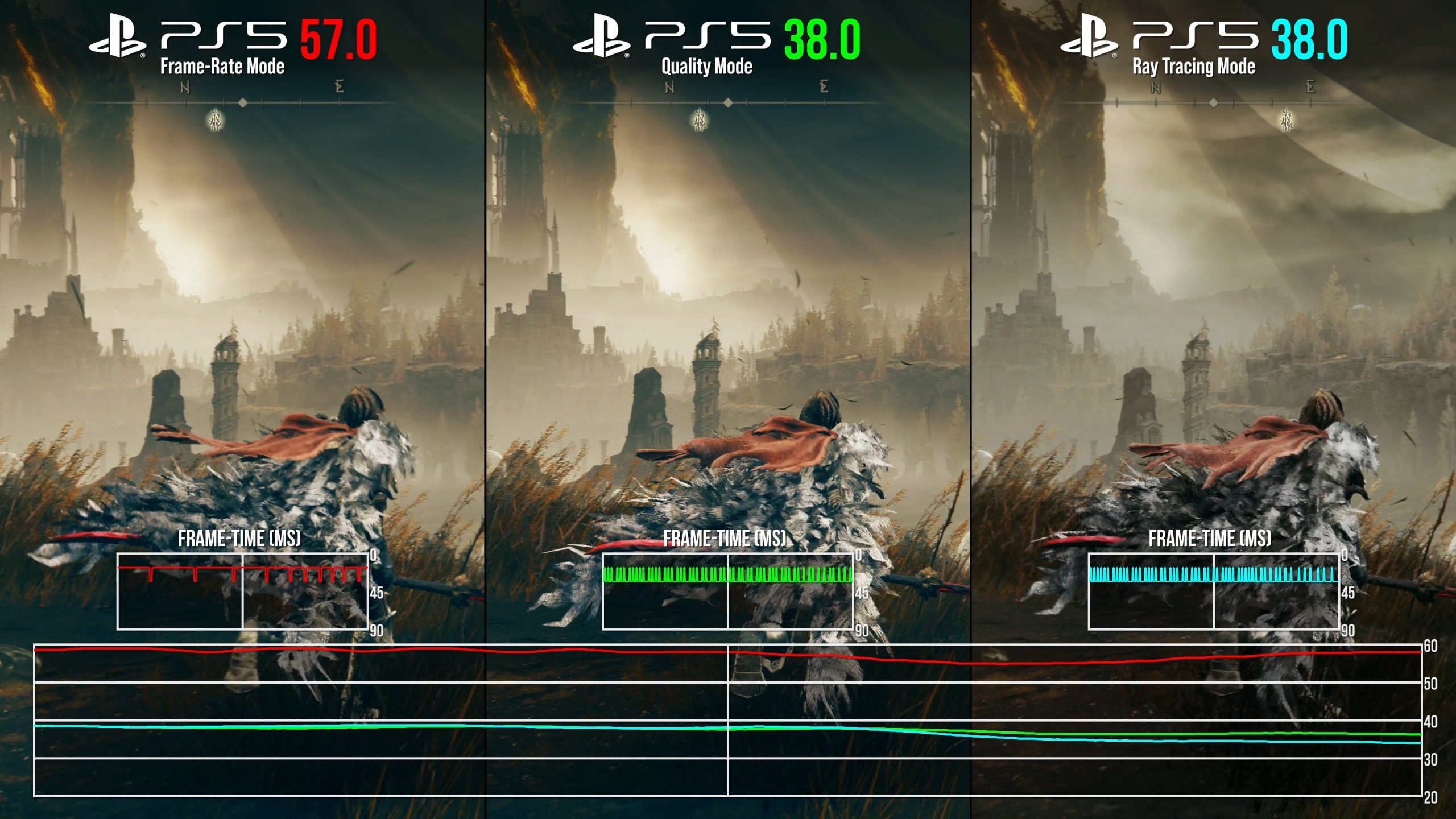In this week’s DF Direct Weekly, we spend some time discussing the state of console performance and increasing importance of VRR (variable refresh rate) support for current-gen hardware in delivering a smoother, more consistent level of performance. We don’t think VRR is being used as a crutch by game developers to mitigate wobbly frame-rates, but we do think that it’s an excellent user tool in improving the overall performance in a relatively small number of titles… and its importance increasing.
So, before we go on, let’s explain what VRR is. Typically, TVs operate at a fixed refresh rate – usually 60Hz. For completely smooth performance, a game needs to run at 60fps: a new frame for every refresh. A decent fall-back position is 30fps, where a new frame is presented every other refresh. If a game consistently can’t hit either of those targets, we get dropped frames, presenting as judder, or with torn frames. VRR works by tying the screen refresh to the game speed. When the GPU has a new frame ready, the screen refresh begins. This eliminates tearing and reduces judder. On PS5, frame-rates between 48fps to 60fps look smooth on a 60Hz display, but developers need to code in bespoke 120Hz modes to unlock ‘low frame-rate compensation’ or LFC – which retains smoothness at lower frame-rates. On Xbox, 120Hz VRR with LFC ‘just works’.
Let’s consider a few of the games where we consider VRR as highly beneficial to the gameplay experience. That starts with Elden Ring, which recently returned to prominence via its Shadow of the Erdtree DLC. It features RT and quality modes which run unlock but tend to hover in 30fps territory. Its frame-rate mode reduces resolution and employs dynamic resolution. The idea seems to be to hit 60fps, but it rarely happens on any current-gen console. Our advice to FromSoftware would be to widen the DRS range, since it spends so much time on the lower bounds. However, right now, VRR is the only way to turn its lurching frame-rate into a smoother experience. And on top of that, it only works on Xbox consoles via its wider 120Hz VRR support that accommodates more of Elden Ring’s lurching lows. PS5 lacks that support, meaning that VRR only works at 60Hz within a 48Hz to 60Hz window – and that’s not wide enough.
0:00:00 Introduction0:01:04 News 01: Has VRR become a crutch for good performance?0:20:00 News 02: Auto SR impressions!0:37:26 News 03: New Crazy Taxi is open world, massively multiplayer0:47:43 News 04: Mark Cerny dishes on PS5 architecture, games1:03:22 News 05: Sony killing off recordable disc production1:11:19 News 06: Elden Ring patch notes suggest odd performance fix1:19:43 News 07: OutRun steeply discounted on Nintendo eShop1:29:16 Supporter Q1: When do you think we’ll hear more about the PS5 Pro?1:36:55 Supporter Q2: Could DF provide technical context to Eurogamer or IGN game reviews?1:47:42 Supporter Q3: Why does the PS5 only support VRR over HDMI 2.1?1:54:15 Supporter Q4: Why do many developers only offer software Lumen in their UE5 games?1:56:40 Supporter Q5: Whatever happened to SLI and CrossFire?2:02:23 Supporter Q6: How should console versions of games expose graphical options?2:06:17 Supporter Q7: Is there a place for cinematic trailers?
Next up is the case of Dragon’s Dogma 2. In common with many RE Engine games from Capcom, it runs with an unlocked frame-rate. However, the game careens between CPU and GPU limitations, making a consistent 60 frames per second challenging – even with recent CPU optimisations and additions such as the ability to lower resolution, disable RT and motion blur. Again, Xbox in 120Hz mode offers a wide enough VRR window to smooth off the experience (just a shame that upscaling tech is still not working properly) – but it was only with Capcom’s addition of 120Hz VRR support for PS5 did we find a version of the game that does at least present relatively smoothly. Capcom took onboard our feedback – and it works!
